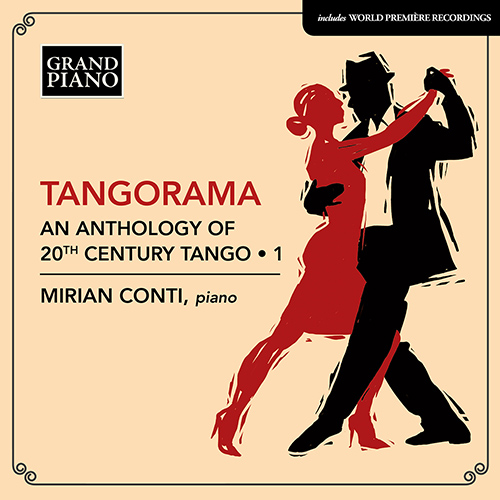
About this Release
- Anselmo Aieta
- Eduardo Arolas
- Emilio Balcarce
- Agustín Bardi
- Juan Carlos Cobián
- Nicolás Luis Cuccaro
- Francisco De Caro
- Enrique Delfino
- Domingo Federico
- Enrique Francini
- Alfredo Gobbi
- Orlando Goñi
- Pedro Laurenz
- Juan Pacho Maglio
- Gerardo Matos Rodríguez
- Mariano Mores
- Roberto Pansera
- José Pascual
- Sebastián Piana
- Julián Plaza
- Osvaldo Pedro Pugliese
- Juan Ventura Cuccaro
- Ángel Villoldo
“My love for tango music began only after I had moved to the US from Argentina. In the late 1980s, I discovered, to my surprise, the enormity of the tango repertoire, its bewitching sounds, the sophistication of the writing, and especially the high degree of artistry and virtuosity of the tango performers. I inherited an incredible collection of hundreds of rare tango scores from Mario Broeders, an Argentine composer who had lived in New York since the late 1950s. Ironically, all these scores were with me in New York up until last year when I decided to move back to Argentina. This music returned with me to its original home, full circle. In selecting the 25 tangos that appear in this collection spanning several decades, I included those that are pianistic and hoped that I might successfully be able to bring to light what each composer wished to express. My intention is to place these tangos on the concert stage for concert pianists where the piano becomes the main star and the pianist shines with this music.” — Mirian Conti
TANGORAMA
An Anthology of 20th Century Tango • 1
- Mirian Conti, piano
This panoramic survey of Argentine tangos shows the genre in all its rich variety of moods and virtuosity. It salutes Ángel Villoldo, the father of tango, whose El choclo (‘The Corncob’) is one of the most famous tangos of all time, and charts the music’s evolution towards the romanticism and lush harmonies of Augustín Bardi. Improvisatory styles, syncopation and jazz harmonies were introduced by such great composers as José Pascual and Orlando Goñi, whilst Enrique Francini developed his personal qualities of dissonance and rhythmic flair into the 1960s. This survey is the first in a series that will document around one hundred rare and classic tangos, all performed by the Argentine pianist Mirian Conti.
This recording was made on period instruments: Yamaha Disklavier DC7X Enspire Pro and Yamaha DCFX ENPRO
Tracklist
|
Delfino, Enrique
|
|
1
Re Fa Si (version for piano) (1917) (00:02:18)
|
|
Maglio, Juan Pacho
|
|
2
Armenonville (version for piano) (1908) (00:02:42)
|
|
Villoldo, Ángel
|
|
3
El Porteñito (version for piano) (1903) (00:01:23)
|
|
4
El Choclo (version for piano) (1903) (00:01:48)
|
|
Arolas, Eduardo
|
|
5
Papas Calientes (version for piano) (1910) (00:01:53)
|
|
Matos Rodríguez, Gerardo
|
|
6
La Cumparsita (version for piano) (1916) (00:02:16)
|
|
De Caro, Francisco
|
|
7
Flores Negras (version for piano) (1927) (00:02:32)
|
|
Villoldo, Ángel
|
|
8
El Torito (version for piano) (1910) (00:01:27)
|
|
Bardi, Agustín
|
|
9
Nunca Tuvo Novio (version for piano) (1928) (00:01:53)
|
|
Cobián, Juan Carlos
|
|
10
La Casita de Mis Viejos (version for piano) (1932) (00:03:09)
|
|
Ventura Cuccaro, Juan
|
|
11
Silueta Porteña (version for piano) (1936) (00:01:48)
|
|
Cuccaro, Nicolás Luis
|
|
11
Silueta Porteña (version for piano) (1936) (00:01:48)
|
|
Pascual, José
|
|
12
Arrabal (version for piano) (1934) (00:03:38)
|
|
Piana, Sebastián
|
|
13
Tinta Roja (version for piano) (1941) (00:01:49)
|
|
Laurenz, Pedro
|
|
14
Milonga de Mis Amores (version for piano) (1937) (00:01:47)
|
|
Goñi, Orlando
|
|
15
Mi Regalo (version for piano) (1944) (00:01:41)
|
|
Federico, Domingo
|
|
16
Percal (version for piano) (1943) (00:02:19)
|
|
Aieta, Anselmo
|
|
17
Corralera (version for piano) (1946) (00:01:58)
|
|
Gobbi, Alfredo
|
|
18
El Andariego (version for piano) (1951) (00:02:36)
|
|
Pansera, Roberto
|
|
19
Naturaleza Muerta (version for piano) (1955) (00:03:15)
|
|
Francini, Enrique
|
|
20
Tema Otoñal (version for piano) (1955) (00:02:49)
|
|
Plaza, Julián
|
|
21
Melancólico (version for piano) (1960) (00:02:46)
|
|
Balcarce, Emilio
|
|
22
Sideral (version for piano) (1962) (00:03:00)
|
|
Plaza, Julián
|
|
23
Nostálgico (version for piano) (1962) (00:02:34)
|
|
Pugliese, Osvaldo Pedro
|
|
24
A los Artistas Plásticos (version for piano) (1964) (00:03:44)
|
|
Mores, Mariano
|
|
25
El Firulete (version for piano) (1943) (00:02:45)
|
The Artist(s)
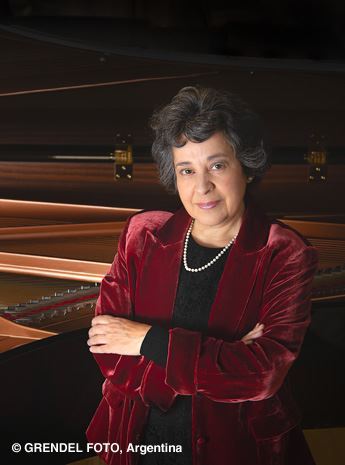 Argentine-American concert pianist Mirian Conti’s recording output and international concerts have garnered praise and awards. In recognition of her extraordinary talent, a scholarship honouring Conti was established at The Juilliard School by the Edwin Bachman Estate. In addition, she was selected as one of 100 Outstanding Alumni to celebrate Juilliard’s centennial in 2005–06. She is on the Faculty of The Juilliard School Evening Division in New York City since 2007, presenting new courses on Classical Piano Literature.
Argentine-American concert pianist Mirian Conti’s recording output and international concerts have garnered praise and awards. In recognition of her extraordinary talent, a scholarship honouring Conti was established at The Juilliard School by the Edwin Bachman Estate. In addition, she was selected as one of 100 Outstanding Alumni to celebrate Juilliard’s centennial in 2005–06. She is on the Faculty of The Juilliard School Evening Division in New York City since 2007, presenting new courses on Classical Piano Literature. The Composer(s)
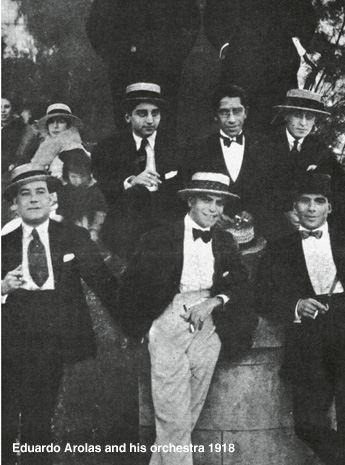 Eduardo Arolas nicknamed the ‘tiger of the bandoneon’, composed this charming Papas calientes (‘Hot Potatoes’) around the 1910s. In a short life, he composed hundreds of pieces of excellent quality, with a modern view of tango.
Eduardo Arolas nicknamed the ‘tiger of the bandoneon’, composed this charming Papas calientes (‘Hot Potatoes’) around the 1910s. In a short life, he composed hundreds of pieces of excellent quality, with a modern view of tango. 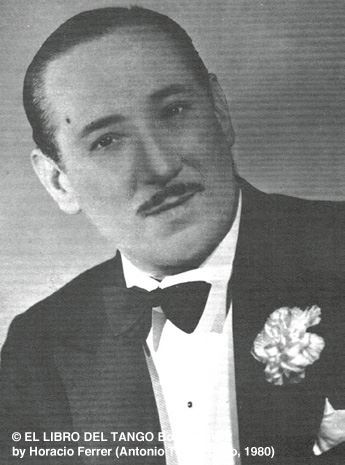 Juan Carlos Cobián along with Agustín Bardi (1884–1941) and Francisco de Caro (1898–1976) were responsible for the next step in the evolution of tango at the piano. All three tangos, Nunca tuvo novio, La casita de mis viejos and Flores negras have something in common: pure romanticism and luscious harmonies – a new means of expression in tango piano writing.
Juan Carlos Cobián along with Agustín Bardi (1884–1941) and Francisco de Caro (1898–1976) were responsible for the next step in the evolution of tango at the piano. All three tangos, Nunca tuvo novio, La casita de mis viejos and Flores negras have something in common: pure romanticism and luscious harmonies – a new means of expression in tango piano writing. 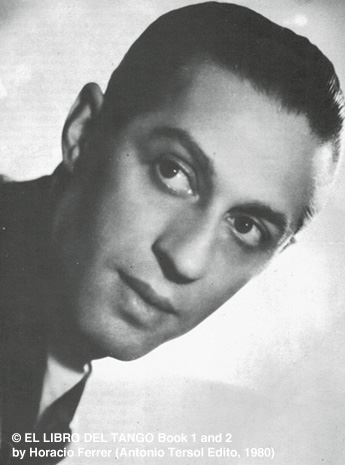 Agustín Bardi (1884–1941), Juan Carlos Cobián (1896–1953) and Francisco de Caro (1898–1976) were responsible for the next step in the evolution of tango at the piano. All three tangos, Nunca tuvo novio, La casita de mis viejos and Flores negras have something in common: pure romanticism and luscious harmonies – a new means of expression in tango piano writing.
Agustín Bardi (1884–1941), Juan Carlos Cobián (1896–1953) and Francisco de Caro (1898–1976) were responsible for the next step in the evolution of tango at the piano. All three tangos, Nunca tuvo novio, La casita de mis viejos and Flores negras have something in common: pure romanticism and luscious harmonies – a new means of expression in tango piano writing. 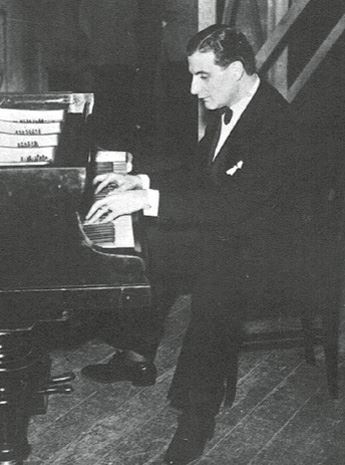 Enrique Delfino was considered one the finest pianists of the early decades of the 20th century who pioneered the tango romanza/canción. He was against the conventional milonga rhythms written in scores with the typical habanera accompaniment. He said: ‘El tango no se toca así, hay que escribirlo como suena’ (‘The tango cannot be played like that, it must be written as it sounds’).
Enrique Delfino was considered one the finest pianists of the early decades of the 20th century who pioneered the tango romanza/canción. He was against the conventional milonga rhythms written in scores with the typical habanera accompaniment. He said: ‘El tango no se toca así, hay que escribirlo como suena’ (‘The tango cannot be played like that, it must be written as it sounds’). 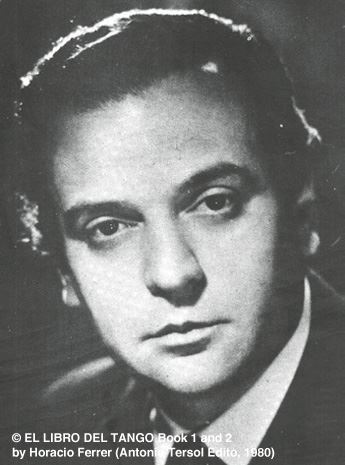 Alfredo Gobbi was referred to as ‘the romantic violin of tango’. He was born in Paris but his parents returned to Argentina before he was one year old – by the age of six he was studying piano but quickly changed to the violin. His slow, accented style, and an attractive use of rubato, syncopation and subtle dynamics, are his hallmarks, as can be heard in his tango El andariego (‘The Wanderer’).
Alfredo Gobbi was referred to as ‘the romantic violin of tango’. He was born in Paris but his parents returned to Argentina before he was one year old – by the age of six he was studying piano but quickly changed to the violin. His slow, accented style, and an attractive use of rubato, syncopation and subtle dynamics, are his hallmarks, as can be heard in his tango El andariego (‘The Wanderer’). Reviews
“A worthwhile recording!” – Piano News
“This month on “Latest/Greatest: The Best Albums of the Month”, host Zev Kane shares his January favorites. See the complete list here: https://www.wqxr.org/story/latest-greatest-february-2021/” – WQXR (New York)
“Lovingly selected and superbly played by the terrific Argentine-American pianist Mirian Conti.” – Rafael’s Music Notes

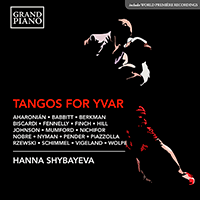
 Grand Piano has gained a reputation for producing high quality recordings of rare keyboard gems. Dedicated to the exploration of undiscovered piano repertoire, the label specialises in complete cycles of piano works by many lesser-known composers, whose output might otherwise have remained unknown and unrecorded.
Grand Piano has gained a reputation for producing high quality recordings of rare keyboard gems. Dedicated to the exploration of undiscovered piano repertoire, the label specialises in complete cycles of piano works by many lesser-known composers, whose output might otherwise have remained unknown and unrecorded.






